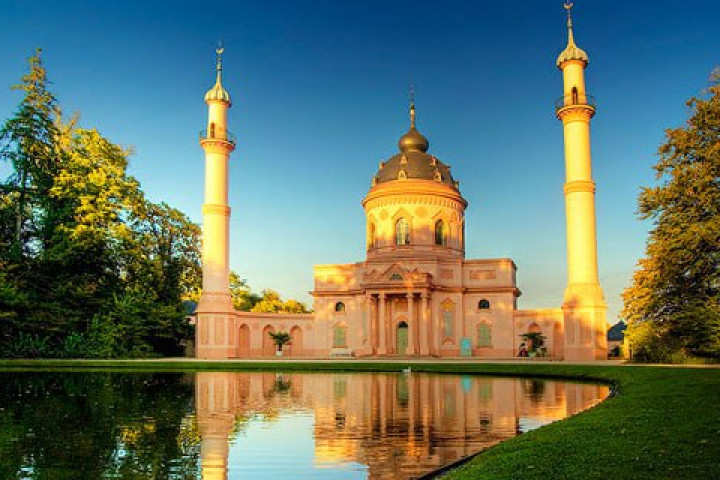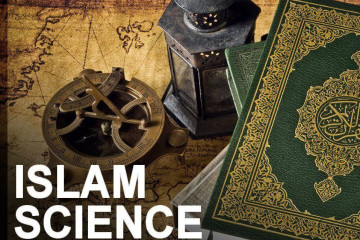
GERMAN APPROACH TO THE STUDY OF ISLAMIC STUDIES
Abduvahob Tukhtanazarov,
Master of the 2nd stage of the International
Islamic Academy of Uzbekistan
Annotation
This article examines the history, activities, stages of development of Islamic studies centers in Germany and their specific aspects. It also reveals the educational system of higher education institutions in Germany, methods and approaches to teaching Islamic studies.
Keywords: Germany, Islamic Studies, August Müller, Philology, Oriental Studies, Der Islam, Münster / Osnabruk, Tübingen, Frankfurt / Giessen and Nuremberg, Erlangen, Bamberg, I. Goldtsier, E. Bikerman, Muslim, Religious Education
The history of the study of Islam and Islamic culture in Germany goes back a long way. In 1143, the first Latin translation of the Qur’an was prepared in Spain and first published in Basel, Switzerland. Its revised edition was made in Germany by Martin Luther in 1546 and has retained its importance in Europe for the next 400 years. The scientific study of Arabic in Germany began in the 16th century, when a number of manuscript sources came to the library in Heidelberg, and Syrian Christians were working on these manuscripts. But at that time, the Netherlands was recognized as the true center of Islamic studies. His brilliant representatives are Jacob Golius (d. 1667) and Thomas Erpenius (d. 1624). It was they who translated Ibn Tufayl’s Hayy ibn Yaqzan from Arabic into Latin. In the following periods, conflicting views on Islam and the Arabic language began to emerge in Germany. In particular, criticizing the Arabic language system, Ewald wrote Grammatica critica linguae arabicae (Critical Arabic Grammar).
Another work of this type was Caspari’s world-famous Grammatica Arabica (Arabic Grammar, 1844-1848), which was later translated into English and French. However, in its first edition in August 1887, edited by August Müller, it was stated that the study of Arabic grammar should be based on the system of Arabic philologists. The commentaries of oriental scholars were not used in compiling an annotated dictionary of the languages of Arabic and other Muslim countries in texts published from the seventeenth century onwards, but one can see that the dictionaries did not translate these words or did not translate them appropriately.
In Germany, Islamic studies emerged as a separate discipline from Orientalism in the nineteenth century, and much research has been done in the field. But the research was largely based on philology and the study of the culture and history of the peoples of South Africa and Asia on the basis of texts. Until 1933, German scientists were supported by academic institutions and had the opportunity to conduct research. However, between 1933 and 1945, the freedom of scientists was restricted, and research in this area was suspended for some time. In the nineteenth century, a critical approach to the field of Islamic studies and similar works became widespread, and the reason for their emergence was the achievements in the field of Oriental studies, and especially the research in German Oriental Studies.
The development of oriental studies in Germany led to the revival of the methods and means of classical philology in the second half of the eighteenth century, which later served as a model for all areas of philology. The influence of classical philology on the Arabic language can be traced back to the second half of the 18th century, when high-ranking German Arabic scholars, including Michaelis (1717-1791) and Reyske (1716-1774), appeared on the world stage. Reyske had to go to the Netherlands to study Arabic texts. Because, unlike Germany at that time, many manuscript sources were brought to the Netherlands due to trade relations with the East. Among the Dutch orientalists are Schultens and Warner. During the 1960s and 1970s, there were further attempts to develop the field of Oriental Studies. A report by the German Society of Oriental Studies in 1972 gave a number of reasons to focus on the study of Islamic culture as a separate discipline and the development of language skills. It should also be noted that prior to 1990, approaches to the study of Islamic studies in West and East Germany were quite different. In West Germany, the Orientalist approach prevailed, while in East Germany, the study of modern and social problems under the influence of Marxist ideas was central. However, after the 1990s, when West German scientists took over the duties of East German researchers, these different approaches began to merge.
Almost no courses were organized in Western European universities for the critical study of Islamic history. However, the St. Joseph Catholic University in Beirut, opened in 1902, provided ample opportunities for this. Historical and historical-geographical courses were taught by the Catholic priest Heinrich Lammens. As a result, a number of studies have been published in which many sources have been analyzed analytically and often enriched with new ideas. The most notable of these were Etudes sur le regne du calife omaiyade Moawia ler (Studies on the Reign of the Umayyad Caliph Muawiya I, 1906) and Le Berceau del’Islam (Cradle of Islam, 1914). The latest edition of the book consists of a collection of lectures read after the university was transferred from Beirut to Rome, the pope to the Bible Institute. It is clear from his introductory part that Lammens decided to completely reconsider the life of the Prophet Muhammad. Lammens’s interests are entirely focused on the objective study of the conditions of Muslim cultural life, religious and material issues. As a result of reading the texts, he tries to express an objective opinion regardless of how he is evaluated in the Muslim world by state institutions and individuals. Nevertheless, as a representative of the Catholic Church, some inappropriate remarks made by the Prophet in honor of his relatives and companions are also endorsed by Lammens.
Beginning in 1907, special centers for the study of the Muslim world began to be established in Europe. The first such center was opened by Professor Becker in 1910 under the name Der Islam. The center, founded in the Netherlands in the twentieth century under the leadership of Professor Hawts, planned to create an “encyclopedia of Islam” in three different languages: German, French and English. Due to the outbreak of World War II, these projects were not completed. The planned encyclopedia was completed with only the letter “I”. Due to insufficient development of the project, it may face some shortcomings. For example, many places are allocated to small towns in Algeria, and larger ones are not given enough information about Delhi, India. Despite its shortcomings, the encyclopedia is a valuable resource. Because it contains a lot of new information about the research and achievements in individual Muslim countries. For example, articles on the research of medieval Spain (Andalusia), the French in Algeria, and the British in Egypt are noteworthy. In conclusion, it should be noted that in these European countries, Islamic studies has not yet developed into a separate discipline. Opinions about this field of science are diverse and we can observe that the views of scientists are developing in a scattered manner.
There are now about 4 million Muslims living in Germany, the third highest number of believers in the Catholic and Protestant denominations of Christianity. The teaching of Islamic theology in German universities is part of modern integration policy. During the five-year course, the German Ministry of Research and Education has allocated € 20 million to centers of Islamic theology at four universities - the Universities of Münster / Osnabruk, Tübingen, Frankfurt / Giessen and Nuremberg, Erlangen. In general, today the center of research in the field of Islamic studies in Germany is occupied by the Islamic religion and culture. The study focuses on how religion and culture interact and how they differ in different societies. Islamic studies is a branch of science that studies not only people’s religious beliefs and how they affect their lives, but also the history of Islam and Islamic culture, as well as the relationship between Islam and literature, philosophy, law, politics, art, and architecture. The study of the Islamic world is carried out through the sacred texts of Islam (the Qur’an and the traditions of the Prophet, i.e. hadith) and historical documents (legal documents, classical literature and history). Students can study Islamic studies as a primary science (Hauptstudium) or as a secondary science (Nebenstudium). Undergraduate and graduate courses together consist of eight or nine semesters. Special attention is paid to the languages of the Middle East in all departments of Islamic studies. Every student studying in this field is required to know Arabic, and in addition, knowledge of Persian, Turkish, or Urdu is often required. It is also more comprehensive than other disciplines, including the study of periods, regions of the Islamic world, literature, philosophy, law, history, and theology.
Today, 24 German universities offer courses in Islamic studies and Oriental languages, and 3,000 students are involved in these courses. Many of them focus on languages, history and culture of the Islamic world throughout the course. Due to the increase in the number of Muslim communities in Germany in recent years, the number of people studying in this field is also increasing. This figure also increases the interest of others in the study of Islamic teachings and Arab culture.
Islamic studies courses at universities are conducted under different names. Examples include (Orientalistik or Orientalisches Seminar), Eastern Seminar, Islamic Studies (Institut für Islamwissenshaft), Arabic Studies, Middle Eastern History and Culture. Surprisingly, these courses offer important cultural and divine knowledge in religious education in Schools, often organized within the Faculty of Arts, rather than at the Faculty of Theology. Religious education helps children learn about their religion and its teachings. Providing such education in a multi-ethnic society helps to prevent conflicts between nations and to explore similarities and differences between religions.
The Department of Islamic Studies (Lehrstuhl fur Islamwissenschaft) was established in 2009 at the University of Bamberg in Germany to conduct research, and this department is one of the nine departments of Oriental Studies at the University of Oriental Studies in Bamberg. The university offers an independent master’s degree in Islamic studies. There are also areas of Islamic studies and the Middle East, organized in collaboration with other departments. Classes are conducted in small groups and in the form of live communication, and students are guaranteed a high quality education. Students can write abstracts and dissertations in bachelor’s and master’s degrees, if the methodological requirements are met. Although the classes are taught entirely in German, all of the working group speak English. Islamic studies is a branch of science that aims to study all aspects of Islam, Islamic culture, and Muslim society. In general, the scope of its study is not limited to a specific area. From a historical point of view, the direction focuses more on the study of the history of the Middle East and South Africa.
Views on Islam and its history vary among German orientalists. Among them is I. Goldtsier, who studied Islamic history and hadith studies. I. Goldtsier expresses the following thoughts and conclusions about Muhammad (pbuh) and the Islamic state he founded: it is a reworked form of the system of Persian states, and its divinity is assimilated from the Neoplatonists and Indians. However, in each of these areas, Islam has shown its ability to process and adapt its foreign aspects. ” Friedrich Schleiermacher, according to I. Goldtsier, such receptivity was inherent in Islam from time immemorial, or, so to speak, destined. I. Goldtsier does not pay much attention to the pathological aspects in the study of early Islamic history, but assesses that the Prophet showed great will and devotion in his courageous struggle against the pagans of Mecca. I. Goldtsier cites individuals who lived in Arabia before Muhammad (saas) and claimed to be prophets, and writes that the claim of any of them had no historical significance.
In the European school of the early twentieth century, there was a critical view that “from a young age, Muhammad was an Arab leader who wanted to make a coup in the religious and political spheres and reach the pinnacle of popularity.” This is based on the fact that the hometown of the Prophet I. Goldtsier (saas) was the center of Arab polytheism in Mecca, which showed his life experience with people and the moral and cultural level of Arab society at that time. He criticizes the Meccan nobility for their duty to preserve al-hajar al-aswad (black stone), saying that it was also important because it brought them material benefits.
But European Islamic scholars seem to have forgotten the property of the monasteries in Europe - the lands that occupied vast territories, entire towns and villages, and the monks who were at the head of these riches. You can find as many examples of this as you want from history. Another basic view is that the Prophet’s call for “obedience and purity” came primarily from his eschatological ideas. As a result, the idea of polytheism and submission to one Creator, God, emerged. No living soul can bring “any benefit or harm” to him. I. Goldtsier compares the Qur’an and the hadiths of the Prophet with the holy books of the Jews and Christians, and puts forward the hypothesis that these sources, combined with ancient Persian Zoroastrianism, Indo-Buddhist philosophy, the idea of the Dokets, formed the basis of Muslim theology, especially eschatology. As evidence, the Resurrection quoted in these sources cites stories about ancient peoples, prophets, and saints.
Representatives of this school conditionally studied the history of the early Islamic period in two parts:
1. The Meccan period: the most basic doctrines were developed and the first Muslim community was formed;
2. The Medinan period: the socio-economic life of the Muslim community was regulated and the systems of the Islamic state were developed. I. Goldtsier refers to the period of Medina. “Muhammad appeared on the stage of history in Madinah as a skilled and tireless fighter, organizer, and founder of the ever-expanding and growing Islamic empire. During this period, Islam emerged not only as a purely religious doctrine, but also as a social, political and legal system. At the same time, the military organization also developed here. I. Goldtsier and E. Bikerman call the prophet “the innovator of the religion of Abraham.” According to the idea he put forward, Islam is not a new religion, it is the only true religion that has existed since time immemorial, only people have changed it at different times and given in to false beliefs.
Islamic scholars, who pay great attention to the historical-critical methodological method, increasingly argue with the Prophet and his followers about Jews and Christians during the Madinah period, saying, .v.) who wrote the Qur’an himself. The fact that the Prophet (peace and blessings of Allaah be upon him) interacted with the representatives of this religion, especially when he was a child, traveled to Damascus also contributed to this idea. But I. Goldtsier, in one place, points out that the prophet exemplified the modest way of life of Christian monks and referred to them as closer to Muslims than to Jews.
In Germany, Islamic studies emerged as a separate discipline from Orientalism in the 19th century, and much research was done in the field. But the research was largely based on philology and the study of the culture and history of the peoples of South Africa and Asia on the basis of texts. The development of Oriental studies in Germany led to the revival of the methods and tools of classical philology in the second half of the 18th century, which later served as a model for all branches of philology. Prior to 1990, approaches to the study of Islam in West and East Germany differed widely. In West Germany, the Orientalist approach prevailed, while in East Germany, the study of modern and social problems under the influence of Marxist ideas was predominant. However, after the 1990s, when West German scientists took over as East German researchers, these different approaches began to merge.
Used literatures
1. Thomas Erpenius, also known as Thomas van Erpen (Lat. Thomas Erpenius, Dutch: Thomas van Erpen, born September 11, 1584, Gorinham - died November 13, 1624, Leyden) - Dutch Orientalist and theologian.
2. Yakobus Golius, also known as Yakob van Gol, Yakobo Golio (lat. Jacobus Golius, Dutch: Jacob van Gool, Jacob Gohl, Iacobo Golio, 1596, The Hague - September 28, 1667, Leyden) - Dutch East Coast, mathematician, astronomer and traveler rector of Leydenskogo University.
3. Geo. Henric Aug. Ewald. Grammatica critica linguae arabicae, cum brevi metrorum doctrina. Lipsae.1831
4. Thomas Erpenius, Albert Schultens. Grammatica Arabica. Paperback April 16, 2012.
5. Johann David Michaelis (27 February 1717 - 22 August 1791), a famous and eloquent Prussian biblical scholar and teacher, https://bigenc.ru/religious_studies/text/2219246
6. Henri Lammens (1 Jul 1862 - 23 Apr 1937) was an Orientalist historian and Jesuit, who wrote on (in French) the early history of Islam.
7. Codera and Zaidín, Francisco. Studies on the Regne du Calife Omaiyade Moawia Ier. La Jeunesse du Calife Yazid Ier. Alicante: Virtual Library of Miguel de Cervantes, 2008
8. Henry Lammens. Le Berceau del’Islam. Pontificii Biblici Institutes in Rome. 1914
9. H. Lammens, “Mélanges de l’Université Saint - Joseph”, Beyrouth, XXI, fasc. 2, 1937 (full bibl. Tr L.); Salibi K. S., Islam and Syria in the writings of Henri Lammens, v kn .: Historians of the Middle East, ed. by B. Lewis and P. M. Holt, L., 1962, p. 330-42.
10. Ignaz Goldziher. Muhammedanische studien. Halle a. s., Max Niemeyer. 1889. P 75-76.
11. https://www.degruyter.com/journal/key/ISLM/html
12. https://rus-philosophical-enc.slovaronline.com/3843
13. https://www.degruyter.com/journal
14. https://broukgauzefron.slovaronline.com/116162-Shultens_Genrih_Albert
15. https://jhist.org/lessons_06/bikerman_26.htm
16. https://studme.org/111500/religiovedenie/trudy_evropeyskih_uchenyh_istorii_islama_kultury
Additional Information

-middle.jpg)

 O`Z
O`Z
 РУ
РУ
 EN
EN
 العربية
العربية

Notes